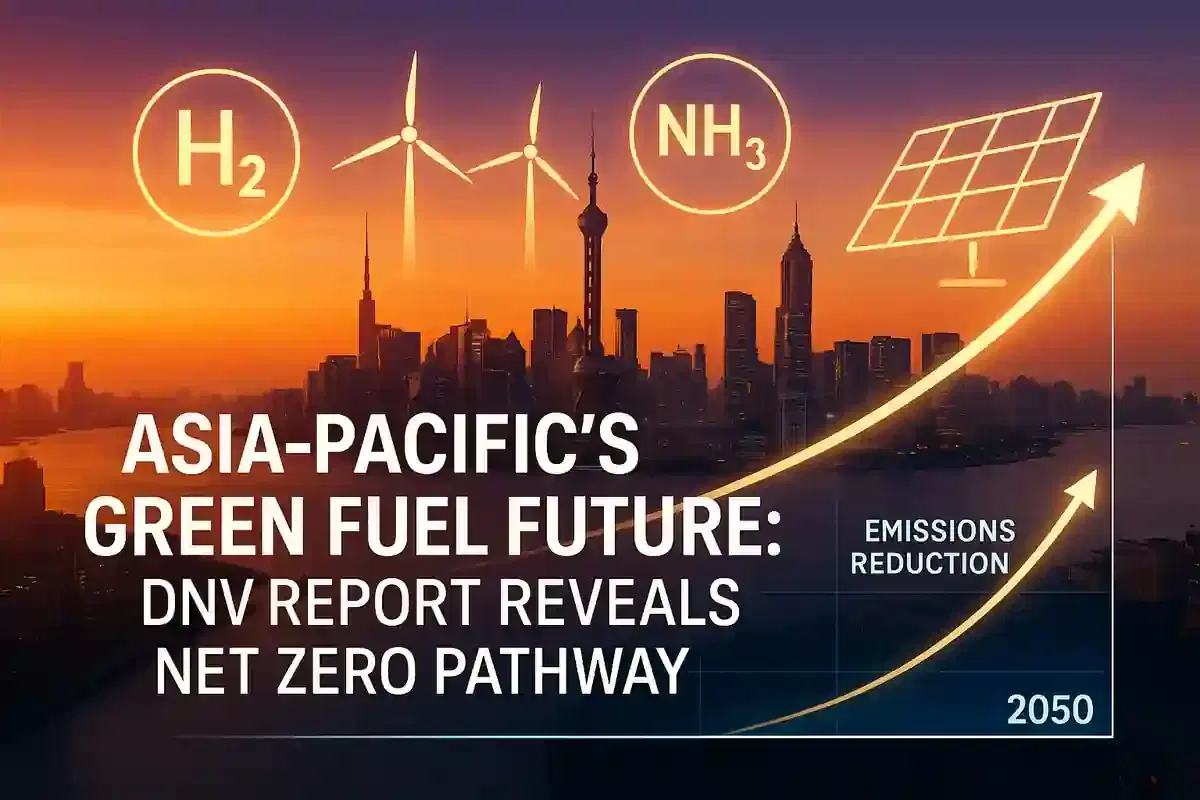Asia-Pacific Needs Green Fuels for Net Zero by 2050, DNV Report Finds
Energy
|
29th October 2025, 6:33 AM

▶
Short Description :
Detailed Coverage :
DNV's latest report, launched at the Asia Clean Energy Summit, emphasizes the critical role of New Energy Commodities (NECs) – including hydrogen, ammonia, sustainable fuels, and carbon sequestration – in achieving Asia-Pacific's net-zero targets by 2050. These NECs are projected to account for over 25% of the region's emissions reductions, complementing the primary drivers of electrification and renewable energy expansion.
The report identifies aviation, maritime, steel, power, industrial chemicals, and cement as sectors heavily reliant on NECs for decarbonization, as direct electrification is challenging for some.
Beyond emissions cuts, these clean fuels are expected to enhance regional sustainability, support economic development, cater to growing populations, and increase resilience against global energy price shocks and supply disruptions.
Due to geographical imbalances in supply and demand, international trade in NECs will be pivotal, with DNV forecasting 81% of NECs to be traded. This necessitates significant infrastructure investment, including new ports and carriers, alongside mechanisms for cross-border interoperability.
Japan, South Korea, and Singapore are anticipated to be major NEC consumers, relying on imports. Australia is well-positioned to be a leading supplier, though other emerging producers are rapidly gaining ground.
The report addresses recent uncertainties affecting hydrogen investment and provides practical guidance. Key recommendations include harmonizing standards, developing certification frameworks for market access, investing in resilient supply chains, managing biomass resources flexibly, and strengthening market signals like carbon pricing and mandates for CCS.
Impact: This news has a substantial impact on the Indian stock market and Indian businesses. India is actively pursuing green hydrogen and renewable energy targets as part of its climate commitments. The growth of NECs will drive investment in related infrastructure, manufacturing, and technology sectors. Companies involved in renewable energy, manufacturing of green fuels, carbon capture technologies, and heavy industries like steel and cement will see significant opportunities and potential shifts in their operational strategies and investment plans. The focus on international trade also opens avenues for Indian companies in export markets and influences domestic supply chain dynamics. Impact Rating: 8/10
Difficult Terms: New Energy Commodities (NECs): These are cleaner, less carbon-intensive forms of energy and feedstocks that are crucial for reducing emissions in sectors that are difficult to electrify, such as hydrogen, ammonia, sustainable aviation fuel, and captured carbon. Decarbonising: The process of reducing the amount of carbon dioxide (CO2) and other greenhouse gases released into the atmosphere, often by switching to cleaner energy sources or improving efficiency. Electrification: The process of replacing fossil fuel-powered systems with electric ones, often powered by renewable energy. Carbon Sequestration: The process of capturing carbon dioxide (CO2) emissions from sources like industrial facilities and storing it underground or in other geological formations to prevent it from entering the atmosphere. Interoperability: The ability of different systems, networks, or products to work together seamlessly. In this context, it refers to making different regional energy systems and standards compatible. Mandates: Official orders or requirements, often from governments, that compel businesses or individuals to adopt certain practices or technologies, such as using a minimum percentage of renewable energy. Carbon Pricing: A strategy where a cost is placed on carbon pollution, either through a tax on emissions or a cap-and-trade system, to incentivize reductions.